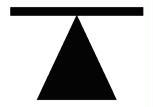Slurry tanker stability - risk of overturning when changing a wheel
Date published:

Introduction
This safety alert is to warn farmers, farm contractors and tyre-fitters of the dangers associated with changing a wheel on slurry tankers. Work is ongoing to ensure the required safety standards are met and that safe systems of work are followed.
Background
A farm worker tragically lost his life while changing a punctured wheel on a single axle slurry tanker weighing 9 tonne. He was on a farm lane on the way to a field with a full load when the puncture occurred. During the operation the tanker was attached to the tractor and a bottle jack along with timber blocks were being used for support. While working close to the tanker it overbalanced and crushed him.
HSENI has since been made aware of another almost identical incident which occurred when a tyre fitter suffered a major injury while changing a wheel on a similar machine. Jacking and propping in this instance had been carried out on the drawbar (centre line) due to the lack of access to a suitable jacking point. In both cases, the fitter and farmer were working very close to the body of the tanker - within the danger zone.
Investigation
Investigation of these two accidents has considered slurry tanker design and the safe systems of work used.
It is a foreseeable maintenance task that tyres will be replaced during the working lifetime of a slurry tanker and that there is a risk of instability during wheel removal. However, it appears that for slurry tankers, this risk has not been recognised.
The costs to a farmer of employing a professional tyre fitter were found to be low when compared to the cost of a heavy duty trolley jack and heavy duty axle stands.
Tyres on farm machinery have substantially increased in width, height and weight over recent years. This has introduced issues with:
- a reduction in the clear space between the drawbar (on the centre line of the tankers) and the inside of the tyres
- an increase in the height to which a jack must reach in order to lift the tanker off the ground
- manual handling due to the sheer size and weight of the tyres
On many slurry tankers, there is no clear indication or marking, to specify where to jack and prop safely.
This should be provided using the internationally recognised symbol illustrated in Figure 1.

A number of possible causes of instability include:
- a loaded tanker has a high centre of gravity
- the use of inappropriate jacks and props
- overloading of the jack / props
- positioning the jack / supports close to, or on, the centre-line of the slurry tanker
- unevenness of the ground or uneven timber / supports used to prop
- small movements in the liquid load
Action required
HSENI are directing farmers to minimise the risks by:
- putting a plan in place to deal with a puncture on a slurry tanker / similar equipment
- consider using a skilled professional tyre fitter to change the wheel - the cost is minimal compared to the costs associated with the serious consequences if something goes wrong when farmers attempt the task themselves
- emptying the slurry tanker – if necessary transfer the slurry to another tanker
- contact the NIEA Water Pollution Hotline, 0800 807060 if spillages affecting watercourses may occur
- moving the slurry tanker to a position of safety on good flat hard standing where possible
- contacting the PSNI on 0845 600 8000 if your vehicle is a hazard to other road users
Safe system of work
HSENI advises those who are equipped and skilled to undertake the tyre removal and replacement task, to ensure that they have a safe system of work. This means in addition to the above, ensuring that:
- the slurry tanker wheels are chocked and it is hitched to a tractor with its parking brake effectively engaged
- a jacking / lifting / supporting position is chosen to maintain maximum tanker stability
- the load at the jacking / lifting point is known
- the jacking / lifting equipment has sufficient lift capacity and is adequately maintained for the task
- the tanker is designed to withstand the load on the chosen jacking / lifting point
- ground conditions at the jacking point can withstand the loading
- the hydraulics of any forklift truck / telescopic handler (or other similar vehicles) deployed are not solely relied upon while working in the danger zone
- an adequately rated axle stand or other prop is positioned following the same safety procedure as for choosing the jacking point
- there is no possibility of slippage between the safety prop (axle stand or other adequate strength support) and the tanker
- as far as possible those involved in the task stay clear of the danger zone (crush area if the tanker were to collapse off its temporary support)
- where possible, mechanical aids are used to lift / position wheels
- high visibility clothing is worn where appropriate and where possible the work is carried out away from live traffic
- the user manual / manufacturer should be consulted if there are any queries.
More information
- HSG 261 - Health and safety in motor vehicle repair and associated industries
- INDG 434 – Working Safely under Motor Vehicles being repaired
References
- BS ISO 3767-1:1998+A1:2008 Tractors, machinery for agriculture and forestry, powered lawn and garden equipment – symbols for operator controls and other displays.